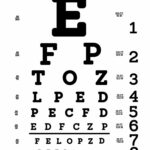The acronym “DBQ” surfaces frequently in specific academic and professional circles, most notably within the realms of history education and legal contexts pertaining to veteran affairs. It stands for different things depending on these contexts. Understanding the nuances of its meaning is crucial for anyone engaging with these fields. We’ll examine the most common interpretations, dissecting their application and significance.
In education, particularly concerning Advanced Placement (AP) History courses and similar curricula, DBQ represents a Document-Based Question. This designation is far more than a mere label. It represents a cornerstone assessment tool designed to evaluate a student’s capacity for critical thinking, historical analysis, and persuasive argumentation.
The structure of a DBQ is consistent: Students are presented with a carefully curated selection of primary source documents. These documents might include letters, diaries, political cartoons, speeches, government records, maps, photographs, and other artifacts relevant to a specific historical period or event. The documents are never presented in isolation. Instead, the student is provided with a focused question, a prompt that demands a well-reasoned, evidence-based response.
A truly exceptional DBQ response demonstrates several key skills. First, students must be adept at document analysis. This goes beyond simply summarizing the content of each document. It requires an understanding of the document’s provenance, considering the author’s perspective, the intended audience, and the historical context in which it was created. Was there any bias?
Second, students must exhibit synthesizing information. The documents, while related, may present conflicting viewpoints or offer incomplete perspectives. A skilled student weaves these disparate pieces of evidence into a coherent narrative, identifying patterns, contradictions, and nuances within the historical record.
Third, and perhaps most importantly, students must construct a persuasive argument. The documents serve as the raw materials for building a well-supported thesis statement. The answer should not simply reiterate the information contained within the documents. Rather, it should use the documents as evidentiary support for a larger, more complex interpretation of the historical question. Furthermore, the best DBQ responses often integrate outside knowledge, demonstrating an understanding of the broader historical context that extends beyond the provided documents.
The emphasis on primary source analysis and argumentative writing makes the DBQ a valuable pedagogical tool. It transcends rote memorization, encouraging students to actively engage with history as a process of inquiry and interpretation. It hones crucial skills applicable far beyond the classroom, fostering critical thinking, analytical reasoning, and effective communication – skills vital for success in higher education and professional life. The DBQ encourages students to avoid anachronistic fallacies in their thinking.
However, “DBQ” takes on a different connotation within the realm of United States Department of Veterans Affairs (VA). Here, it signifies a Disability Benefits Questionnaire. These standardized forms are utilized by medical professionals to provide the VA with detailed information regarding a veteran’s medical conditions and their potential connection to military service.
The purpose of a DBQ in this context is to streamline the disability claims process. By providing a structured format for medical evaluations, the VA aims to ensure consistency and completeness in the information it receives. This, in turn, is intended to facilitate more efficient and accurate adjudication of disability claims.
A DBQ typically includes sections pertaining to: the veteran’s medical history, including any pre-existing conditions; a detailed description of the current symptoms and functional limitations associated with the claimed disability; the results of relevant physical examinations, diagnostic tests, and laboratory findings; a medical opinion regarding the etiology of the disability, specifically addressing whether it is related to military service; and an assessment of the severity of the disability, including its impact on the veteran’s ability to perform activities of daily living and maintain employment.
Different DBQ forms exist for various medical conditions, ranging from musculoskeletal disorders and neurological impairments to mental health conditions and cardiovascular diseases. This specialization allows medical professionals to tailor their evaluations to the specific needs of each case, providing the VA with the targeted information it requires to make informed decisions.
The accuracy and completeness of the DBQ are paramount. The VA relies heavily on the information contained within these forms when evaluating disability claims. A poorly completed or inaccurate DBQ can lead to delays in processing the claim, or even to a denial of benefits. Therefore, it is crucial for veterans to work closely with qualified medical professionals who are familiar with the DBQ process and can provide thorough and accurate evaluations.
Furthermore, veterans have the right to submit their own DBQs as part of their disability claims. This can be particularly beneficial if the veteran has difficulty obtaining a DBQ from a VA medical provider, or if they believe that a previous DBQ was incomplete or inaccurate.
In summary, the acronym “DBQ” is a bifurcated term, holding different meanings depending on the context. In education, it represents a Document-Based Question, a tool designed to assess critical thinking and historical analysis. Within the VA, it stands for Disability Benefits Questionnaire, a standardized form used to facilitate the processing of disability claims for veterans. An understanding of these disparate meanings is essential for navigating these respective domains. The differing interpretations highlight the diverse ways in which structured assessments and documentation are utilized across various sectors to evaluate competency, adjudicate claims, and facilitate decision-making. One assesses academic prowess; the other, the tangible consequences of service and sacrifice.









Leave a Comment